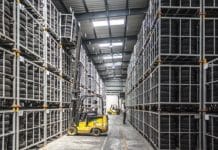To begin with, it is important to ensure social distancing in this epidemic environment. The call on lock-down and containment measures are extending around the globe. The declaration of this lock-down and social distancing is to ensure to break the chain of COVID-19 is the only precautionary mode recommended. Primarily residents are urged to stay at home and avoid socializing.
In India, governments are taking various initiatives and enabling new policies to ensure the availability of primary essentials. Since evidencing abusers are increasing day by day without understanding the severity of this pandemic virus which may have resulted in the spread of COVID – 19 infections.
Meanwhile, The Indian Council of Medical Research (ICMR) denoted that country will reach 8.2 lakh cases by April 15 – 2020 if there was no lock-down (source: The Hindu, April 12 – 2020, Page 6).
Collaborative Procurement and Distribution Strategy
In this context, supply chain plays a vital role for availing the primary essentials to the doorstep of end-users whereas observing that footfalls in stores and markets are increasing, where government personnel are facing difficulties to ensure their social distancing and precautionary measures in such spots.
The fact is, a large number of perishable products are in vein as a result of an absence in the proper procurement plan, even though there is a demand. It is recommended to establish an interrelationship between the source and deliver in the best possible way. An effective data analysis strategy is required with a responsive and flexible supply chain, so that can make changes as per the requirement of uncertainties.
So the use of data basically helps us to identify the containment and isolated zones which helps us to understand the random components and systematic components. It is necessary to identify the requirement of cold chain transport and packed distribution system.
Data also helps to identify, aggregate and prioritizing the procurement zones to integrate the supply of materials.
Sustainable Integrated Distribution Model
Current situation rings the bell to develop an integrated distribution model with a responsive and flexible supply chain. Not only during COVID – 19, but also during a natural disaster, political instability and even during communal violence. In the case of agricultural products, input quantity depends on environmental and biological factors. Such data should be integrated to match the established parameters for effective delivery.
It is essential to validate the supply interval to support distribution and to avoid the high cost of supply cost with the real-time data. Because of this, it is proposed to build an efficient model of monitoring and controlling during these pandemic situations. The review of historical data and evaluation of real-time data should be used to source stocked product process.
It is the right time to think about how to integrate and what is to develop a collaborative procurement and distribution supply chain strategy using data. Back-hauling should be practiced where the empty vehicles should be used to collect the goods from other sources with effective data analytics.
Such a timely delivery of products through a responsive and flexible supply chain with data analytics helps the people to stay back home and will reduce the footfalls in such stores and markets.




